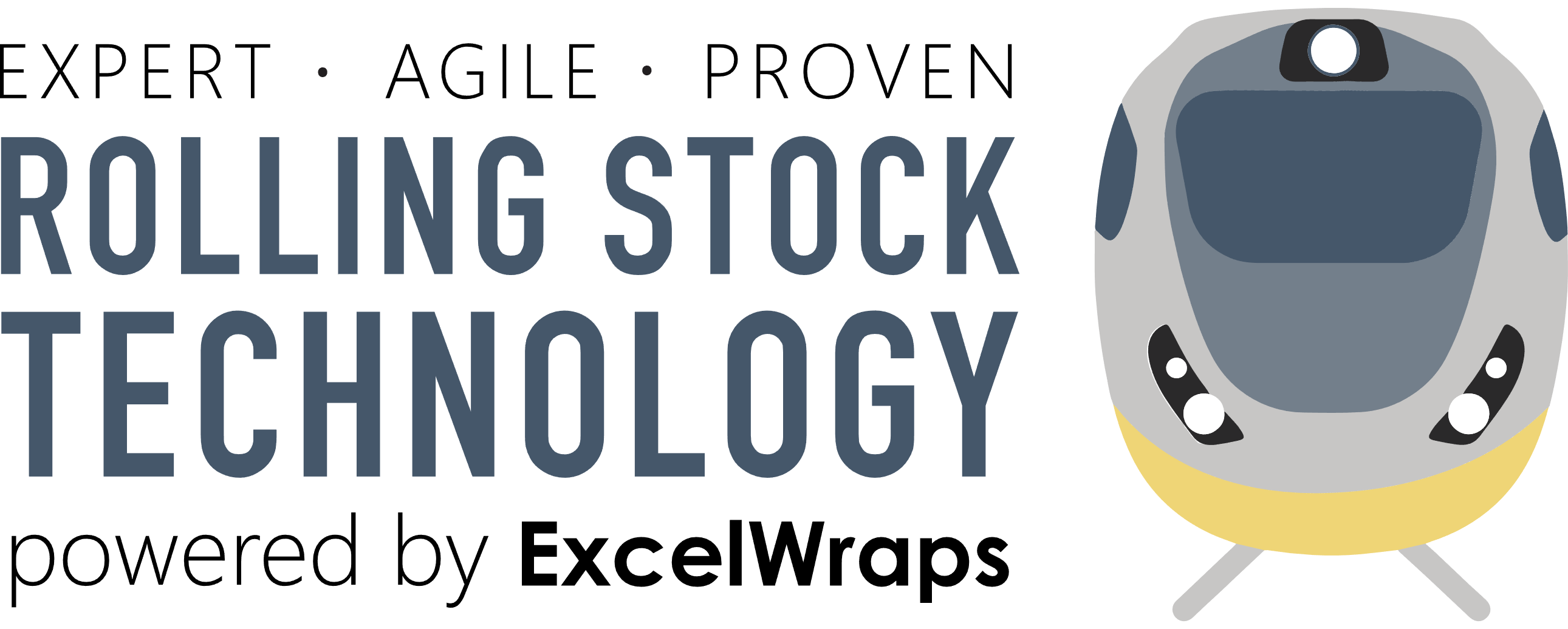Rolling Stock Damage App

ExcelWraps proudly presents its cloud-based solution, Rolling Stock Damage - an innovative application designed to efficiently manage, track, and apportion costs related to railway vehicle damage and vandalism. This cutting-edge app enhances damage identification and cost management amongst the partners involved in the service.
Key features of the Rolling Stock Damage App:
- Damage Heat Maps: The app provides visually intuitive markup maps of damage on the train's layout, such as underframe, roof, or bodyside drawings. Each unit of damage is highlighted for easy identification and processing.
- Detailed Damage Reporting: With an integrated system of traction and rolling stock codes, the app identifies and categorises the damage. It allows users to select the relevant subsystem for precise location, supported by our easy-to-use drilldown navigation features.
- Dynamic Scorecard and Reporting: Particularly concerning damages trigger penalty points that are automatically populated into a scorecard, providing critical areas for targeted analysis.
- Cost Management: Damage repair costs are assessed and managed effectively. Lower-cost repairs can be authorised immediately, while more costly ones can be routed for approval.
- Automatic Updates: As the damage is rectified, the corresponding markers on the map automatically vanish, keeping the system updated in real-time.
- Live Damage Summary: The application showcases a live damage summary in the first tab, making it simple for users to view individual damage details or raise new damage items.
The Rolling Stock Damage App not only revolutionises the way railway damage and vandalism is handled but also provides comprehensive features such as photographic evidence capture, a summary table of damage, and seamless updating of labour rates and material mark-up costs. Offered as a flexible and scalable subscription-based service, Rolling Stock Damage is tailored to meet your specific needs. You can choose from different plans based on your requirements and usage, and even request a free trial or demo to experience the app's functionality first-hand.
If our Rolling Stock Damage App aligns with your needs, please don't hesitate to reach us at info@excelwraps.com. Our team is always available to answer any queries you may have and assist you with the setup and implementation process.
Rolling Stock Damage and Vandalism Policy Framework
Executive Summary
This policy framework establishes clear responsibilities, procedures, and cost allocation mechanisms for managing damage and vandalism across the UK rolling stock ecosystem, involving ROSCOs (Rolling Stock Companies), TOCs (Train Operating Companies), maintainers, and other stakeholders.
Key Stakeholders and Responsibilities1. ROSCOs (Rolling Stock Owners/Lessors)Primary Responsibilities:
Policy Requirements:
2. TOCs (Train Operating Companies)Primary Responsibilities:
Policy Requirements:
3. Maintainers/Depot OperatorsPrimary Responsibilities:
Policy Requirements:
4. Network RailPrimary Responsibilities:
|
Damage Classification FrameworkCategory A: Criminal Damage/VandalismDefinition: Intentional damage caused by external parties Examples:
Cost Responsibility:
Category B: Operational DamageDefinition: Damage resulting from normal operational incidents Examples:
Cost Responsibility:
Category C: Fair Wear and TearDefinition: Expected deterioration from normal use Examples:
|
Policy Implementation Framework1. Immediate Response Protocol (0-4 Hours)TOC Actions:
ROSCO Actions:
2. Assessment Phase (4-48 Hours)Maintainer Actions:
ROSCO Actions:
3. Repair and Recovery Phase (48 Hours+)All Parties:
|
Cost Allocation Matrix
| Damage Type | TOC Liability | ROSCO Coverage | Insurance Recovery | Shared Costs |
|---|---|---|---|---|
| Criminal Vandalism | 0-25% | 25-50% | 50-100% | Case dependent |
| Passenger Abuse | 50-75% | 25-50% | 0-25% | By agreement |
| Operational Error | 75-100% | 0-25% | 0-50% | Fault-based |
| Force Majeure | 0-25% | 75-100% | 50-100% | Shared risk |
| Fair Wear/Tear | 0% | 100% | 0% | Contract provisions |
The cost allocation matrix needs to be agreed with the various stakeholder at the start of a fleet damage repair contract.
Severity Scoring Methodology (1-10 Scale)
Severity 1-2 (Minor): Cosmetic damage, routine maintenance items, no operational impact
- Examples: Filters, fluids, labels, minor trim items
Severity 3-4 (Moderate): Some operational impact but service can continue
- Examples: Individual seat damage, minor lighting faults, routine component wear
Severity 5-6 (Significant): Notable operational impact, may affect passenger comfort or service quality
- Examples: HVAC defects, door malfunctions, communication system failures
Severity 7-8 (Major): Safety implications or severe service disruption
- Examples: Brake system faults, safety system failures, major traction equipment
Severity 9-10 (Critical/Catastrophic): Immediate safety risk or complete service failure
- Examples: Main transformer failure, diesel engine failure, major structural damage
Penalty Point Correlation:
- Items with penalty points (100-300) typically score 3-8 on severity
- 300-point penalties align with severity 7-8 (major safety/service impact)
- Criminal/vandalism items vary 1-8 depending on safety implications
Digital Management via SmartFleet SolutionsDamage Documentation System
Performance Monitoring
Workflow Management
|
Prevention StrategiesSecurity Measures
Design Considerations
Operational Protocols
Data-Driven Insights
|
Performance Metrics and KPIsFinancial Metrics
Operational Metrics
Quality Metrics
Review and Continuous ImprovementRegular Reviews
Industry Collaboration
|
Insurance and Legal Framework
Insurance Requirements
- Comprehensive Coverage: All parties maintain appropriate insurance
- Coordinated Policies: Avoid gaps and overlaps in coverage
- Catastrophic Protection: Major incident coverage arrangements
- Liability Limits: Clear understanding of coverage limits
Legal Compliance
- Health and Safety: Compliance with rail safety regulations
- Criminal Law: Cooperation with police investigations
- Contract Law: Clear terms in lease and maintenance agreements
- Data Protection: Secure handling of incident information
This comprehensive framework ensures clear accountability, efficient damage management, and effective cost control while maintaining the highest standards of safety and service quality across the UK rolling stock industry.
